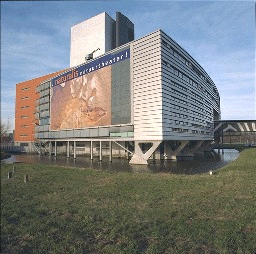Palearctic birds barcoding workshop held in Netherlands
Researchers met at Naturalis, the Natural History Museum of Leiden, Netherlands, on 20-21 April 2006 to form plans for barcoding Palearctic birds. The meeting was convened by Per Ericson,  ABBI Palearctic Regional Chair, Swedish Museum of Natural History, hosted by Rene Dekker, Naturalis, and included representatives from Canada, Denmark, England, France, Iran, Italy, Japan, Norway, Portugal, South Korea, Sweden, and the United States. Additional participants in Palearctic ABBI are welcome–please contact Per Ericson per.ericson@nrm.se.
ABBI Palearctic Regional Chair, Swedish Museum of Natural History, hosted by Rene Dekker, Naturalis, and included representatives from Canada, Denmark, England, France, Iran, Italy, Japan, Norway, Portugal, South Korea, Sweden, and the United States. Additional participants in Palearctic ABBI are welcome–please contact Per Ericson per.ericson@nrm.se.
Discussion topics included sampling strategies based on geographical patterns in Palearctic avian diversity, updating the ABBI compilation of existing avian tissue specimens, using ongoing collecting and ringing operations as additional sources for un- or under-sampled species, cost-effectiveness of DNA sequence recovery from museum skins, facilitation of regional network activities with Barcode of Life Database (BOLD), need for email, website, and/or listserve to monitor progress and plan next steps, potential small and large-scale funding sources including possible low or no-cost sequencing at pre-existing genomic centers, and exciting early results with 600+ COI barcodes from eastern Palearctic birds. Based on this workshop, the Palearctic group expects much progress over the coming year.
This entry was posted on Sunday, April 23rd, 2006 at 8:03 pm and is filed under AllBirds, General. You can follow any responses to this entry through the RSS 2.0 feed. Both comments and pings are currently closed.